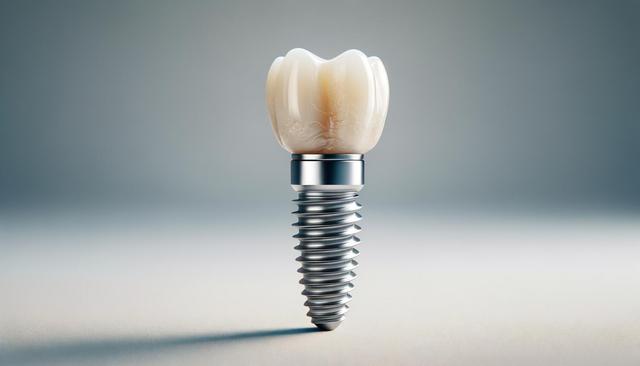Understanding Screwless Dental Implant Technology
Screwless dental implants are a modern alternative to traditional implant systems that rely on screws to secure the prosthetic component. Instead of mechanical fixtures, these implants utilize friction-fit, locking mechanisms, or other advanced retention technologies to hold the crown or abutment in place. This innovation reduces the need for metal components and simplifies the installation process, which can be beneficial for patients and dental professionals alike.
These implants are designed with precision-engineered geometries that provide excellent stability and long-term support. The design typically allows for easier insertion and removal of prosthetic parts without compromising the durability of the implant. By eliminating the need for screws, dentists can often avoid issues such as screw loosening, component wear, or micro-movements that sometimes occur in traditional systems.
Key technical advantages include:
- Enhanced aesthetics due to the absence of screw access holes
- Minimized risk of mechanical complications
- Streamlined workflow for clinicians
- Potential for reduced chair time during procedures
This technological evolution aims to improve patient outcomes while maintaining the functional and cosmetic expectations of modern restorative dentistry.
Benefits for Patients and Dental Professionals
One of the primary attractions of screwless dental implants is the improved experience they offer for both patients and dental practitioners. For patients, the absence of screws means fewer components that might loosen, break, or require maintenance. This can result in a more comfortable, reliable, and long-lasting dental solution.
Clinicians, on the other hand, benefit from simplified procedures and improved efficiency. Many screwless systems are designed to be self-locking or utilize magnetic or friction-based retention. These characteristics can reduce the time required for placement and adjustments, leading to a more predictable clinical workflow.
Some of the patient-focused benefits include:
- Improved comfort and reduced post-operative discomfort
- Faster recovery times due to less invasive procedures
- Better long-term oral hygiene due to fewer crevices and components
- Aesthetically pleasing results without visible screw holes
For dental professionals, the ability to offer a treatment option with fewer complications and maintenance needs supports higher patient satisfaction and potentially better case outcomes.
Design Considerations and Materials
The effectiveness of screwless dental implants largely depends on their design and material composition. Modern systems use biocompatible materials such as titanium or zirconia, which are known for their strength, durability, and integration with bone tissue. These materials help promote osseointegration, the process by which the implant fuses with the jawbone, ensuring long-term stability and function.
Implant geometry is another crucial factor. Tapered designs, internal locking configurations, and precision-fit components all contribute to the success of screwless systems. These designs must be meticulously crafted to ensure that the prosthetic part remains secure under functional load without relying on traditional screw retention.
Common design features include:
- Internal retention grooves or slots
- Press-fit or snap-in mechanisms
- Conical mating surfaces for friction retention
- Optional magnetic retention in some advanced models
When selecting a screwless implant system, dentists must consider the specific clinical application, patient anatomy, and long-term demands of the restoration. Proper training and familiarity with the system are essential to achieving optimal results.
Clinical Applications and Suitability
Screwless dental implants are suitable for a wide range of clinical scenarios, particularly where aesthetics and ease of maintenance are priorities. They are commonly used in single-tooth replacements, especially in the anterior (front) region of the mouth where appearance is critical. Their ability to eliminate visible screw access points makes them ideal for these cases.
These implants are also used in multi-unit restorations, although careful case selection is crucial to ensure that they can withstand the functional demands. For patients with limited interocclusal space or complex anatomical considerations, screwless options may provide a more adaptable solution.
Typical use cases include:
- Single-tooth anterior restorations
- Posterior crowns with adequate support
- Bridges where screw access would compromise aesthetics
- Cases requiring retrievability without invasive procedures
While screwless implants offer many advantages, they may not be suitable for all patients. Factors such as bone density, occlusal load, and patient hygiene habits must be evaluated to determine the most appropriate implant approach.
Future Outlook and Research Directions
As dental implantology continues to evolve, screwless systems are likely to become more prominent in clinical practice. Ongoing research is focused on improving the mechanical properties and retention capabilities of these implants to broaden their applicability. Innovations in digital dentistry and CAD/CAM technologies are also playing a role in enhancing implant precision and customization.
Future developments may include:
- Improved materials with higher fatigue resistance
- Smart implant technologies for monitoring stability and integration
- Integration with guided surgery systems for more accurate placement
- Expanded clinical guidelines and long-term outcome data
Dental professionals can expect to see a growing range of screwless implant solutions as manufacturers respond to demand for more efficient, aesthetic, and patient-friendly treatments. The emphasis will continue to be on reducing complications, enhancing prosthetic integration, and improving both clinical and patient-reported outcomes.
Conclusion: Embracing a New Standard in Dental Restoration
Advanced screwless dental implants represent a meaningful innovation in the field of restorative dentistry. For patients seeking a natural-looking, reliable tooth replacement and for clinicians aiming to streamline procedures while minimizing complications, this technology offers a compelling alternative. While not universally applicable to all cases, screwless systems open up new possibilities for aesthetic, functional, and minimally invasive treatment options. As research progresses and clinical experience grows, these implants are likely to become an integral part of modern dental care.


